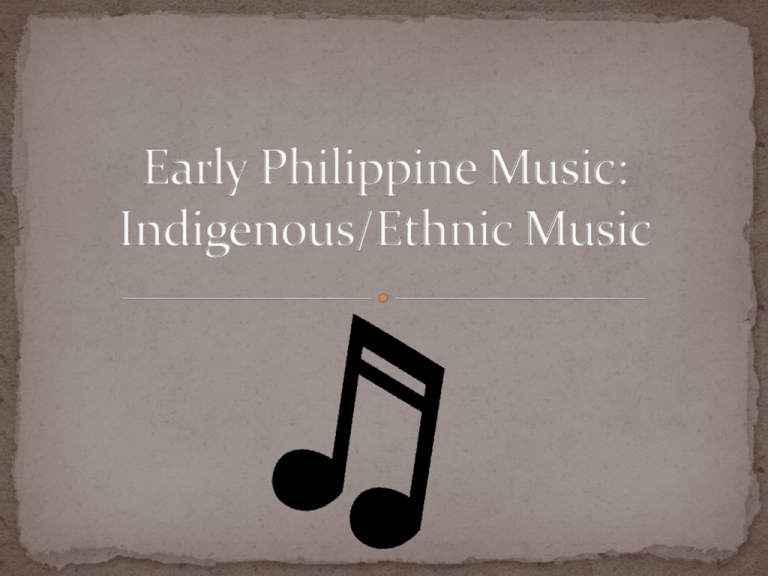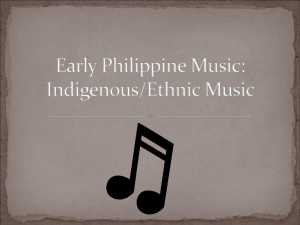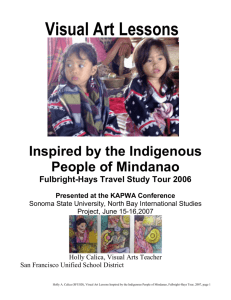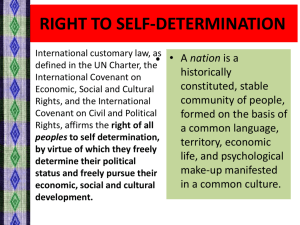Philippine Ethnic Music: An Introduction
advertisement

Ethnic music - the traditional and typically anonymous music that is an expression of the life of people in a community Filipino music is quite diverse as the indigenous people in the Philippines spread across hundreds of islands. There are aproximately 140 ethnic groups. Philippine indigenous music before the colonial era was largely functional. Expressed either instrumentally or vocally or a combination of both, music was deeply integrated with the activities of the natives. The ancient Filipinos had music practically for all occasions, for every phase of life, from birth to death. … largely retained and practiced by about 10 percent of the population concentrated mainly in three regions: Northern Luzon, the Central Philippine islands of Mindoro and Palawan and the southern islands of Mindanano and Sulu. In Mindanao and Sulu, two musical and cultural traditions may be noted – the Islamic, consisting of such groups as the Maguindanao, Maranao, Yakan, Tausog and Samal, and the preIslamic which is composed of the Bagobo, Manobo, Bukidnon, Tagakaolo, Bilaan, Mansaka, Subanon and Mandaya, among others. Music style varies region to region Often the music is Polyphonic & uses highly interlocking repeated patterns. Most musical instruments are Percussion Instruments Some belong to the wind and string family The muscial form/style of the Philippines can be grouped into two : the southern style and the northern style. But as a whole, instruments could be distinguished by their equivalence in wind, string, percussion ethnic groups in the Mindanao Tausug in the Sulu Acrhipelago is known for their sophisticated musical repotoire called Kulintang The main instruments used for Kulintang is similar to the gongs used in Indonesia. Often the music in Mindanao is similar to the tribes in visayas Aerophone instrument: Palendag Chordophone instrument: Kaltsang Idiophone (percussion) instrument: Kulintang ethnic People of Central Cordilleras of Luzon also play music with the use of gongs , but unlike those of the sothern repotoire , the gongs , called Gangsa , are unbossed and originate from mainland Asia Aerophone instrument: Paldong Chordophone Instrument: Gitgit Idiophone (percussion) instrument: gangsa Ethnic music in the Philippines often serves as a musical accompanyment for various traditions such as religious ceremonies and rituals. Phase of Life Example Child Birth Kalinga appros Courtship, Love songs Death, Funerals Kalinga Ading, Inegegkak si labago Maranao Dikir Work Songs Bontoc Ayoweng (Rice Pounding) Hunting Songs Invited guests songs Samal tenis-tenis Tingguian Nature has played a great role in shaping up the music technology and aesthetics of the various ethnic musical traditions. Ethnic musical instruments are primarily objects of nature as they consist mainly of bamboo, wood, shell, animal skin and metal; just as many of the melodies and rhythms of tribal chants imitate some aspects of nature's sounds and movements.” (Pre Colonial Indegenous Music)









